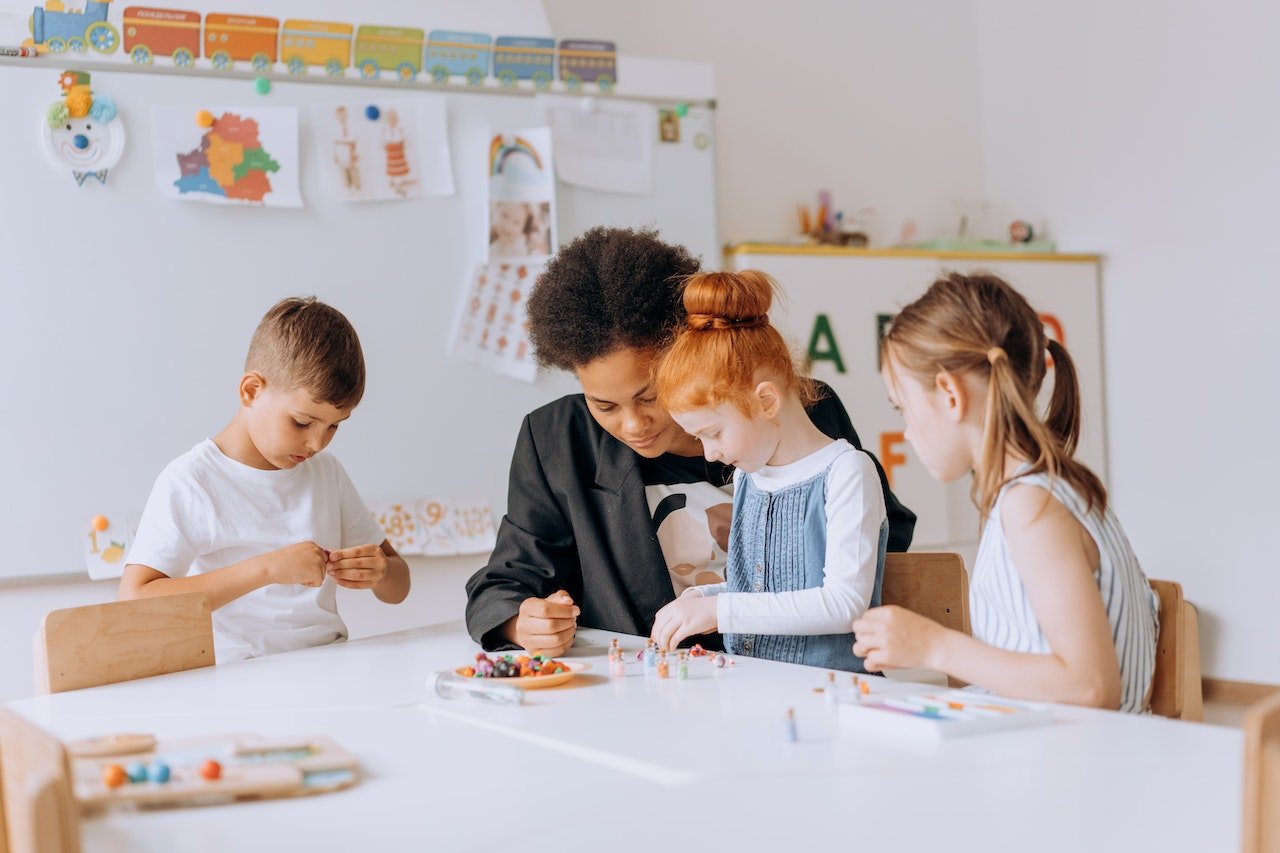Best 25 Tips for Getting Started With Culturally Responsive Teaching

Culturally responsive teaching is an essential practice for educators to create a welcoming and inclusive classroom environment. It is a method of teaching that recognizes and values the cultural diversity of students and incorporates it into the learning process. Culturally responsive teaching is not a one-size-fits-all approach, and it requires teachers to be mindful of their own biases and assumptions. In this article, we will provide you with 25 tips to get started with culturally responsive teaching.
Read More: Top 10 Education Systems in the World.
Understanding Cultural Diversity
To be an effective culturally responsive teacher, you must first understand the cultural diversity of your students. Every student brings unique cultural backgrounds, experiences, and perspectives to the classroom. By understanding and valuing these differences, you can create a more inclusive and respectful learning environment.
Addressing Biases and Assumptions
Everyone has biases and assumptions, and it is essential to address and reflect on them to be an effective culturally responsive teacher. By acknowledging and addressing your biases and assumptions, you can create a classroom environment that is welcoming and inclusive to all students. Getting Started With Culturally Responsive Teaching.
Building Positive Relationships
Building positive relationships with your students is critical to creating a safe and inclusive classroom environment. By establishing trust and rapport, you can better understand your students’ cultural backgrounds and individual needs.
Incorporating Students’ Cultures in Lessons
Incorporating students’ cultures into your lessons can help create a more inclusive and engaging learning environment. You can incorporate cultural examples, stories, and traditions into your lessons to make them more meaningful and relevant to your students. Getting Started With Culturally Responsive Teaching.

Using Multicultural Literature
Using multicultural literature is an effective way to promote cultural diversity and understanding in the classroom. By incorporating literature from different cultures and perspectives, you can help students understand and appreciate different experiences and perspectives. Getting Started With Culturally Responsive Teaching.
Incorporating Diversity in Classroom Decor
Incorporating diversity in your classroom decor can create a more inclusive and welcoming environment for your students. You can display posters, books, and artefacts from different cultures to help students feel valued and respected. Getting Started With Culturally Responsive Teaching.
Using Culturally Responsive Instructional Materials
Using culturally responsive instructional materials is an essential component of culturally responsive teaching. By using materials that reflect your students’ cultural backgrounds and experiences, you can make your lessons more engaging and relevant to your students. Getting Started With Culturally Responsive Teaching.
Incorporating Cultural Celebrations
Incorporating cultural celebrations into your classroom can help students feel valued and respected. By celebrating different cultural holidays and traditions, you can promote cultural understanding and appreciation. Getting Started With Culturally Responsive Teaching.Getting Started With Culturally Responsive Teaching.
Teaching Language and Communication Skills
Teaching language and communication skills is critical for English Language Learners and for all students. By providing opportunities to practice speaking, listening, reading, and writing, you can help students develop the language and communication skills they need to succeed in school and
Using Culturally Responsive Assessment Techniques
Using culturally responsive assessment techniques can help you evaluate your students’ learning while also considering their cultural backgrounds and experiences. By using assessment methods that are culturally relevant and appropriate, you can get a more accurate picture of your student’s progress. Getting Started With Culturally Responsive Teaching.
Providing Individualized Instruction
Providing individualized instruction can help you meet the diverse needs of your students. By tailoring your instruction to each student’s individual needs and learning styles, you can create a more effective and engaging learning environment.
Promoting Collaboration and Communication
Promoting collaboration and communication among your students can help create a sense of community and respect in your classroom. By encouraging students to work together and share their perspectives, you can promote cultural understanding and appreciation. Getting Started With Culturally Responsive Teaching.
Encouraging Student Voice and Choice
Encouraging student voice and choice can help students feel valued and respected in your classroom. By giving them opportunities to share their perspectives and ideas, you can promote their engagement and ownership of their learning. Getting Started With Culturally Responsive Teaching.
Using Technology to Enhance Learning
Using technology can be an effective way to enhance learning and promote cultural understanding in your classroom. By using technology tools that support different learning styles and cultural perspectives, you can create a more engaging and inclusive learning environment. Getting Started With Culturally Responsive Teaching.
Providing Opportunities for Reflection
Providing opportunities for reflection can help students think critically about their own cultural backgrounds and perspectives. By encouraging them to reflect on their own experiences and biases, you can promote self-awareness and cultural understanding.
Engaging Families and Communities
Engaging families and communities in your classroom can help promote cultural understanding and respect. By involving families and communities in your classroom activities, you can create a more collaborative and supportive learning environment.
Learning From and With Students
Learning from and with your students can help you better understand their cultural backgrounds and perspectives. By listening to their perspectives and incorporating their ideas into your lessons, you can promote a more inclusive and engaging learning environment. Getting Started With Culturally Responsive Teaching.
Creating Safe Spaces
Creating safe spaces in your classroom is critical to promoting cultural understanding and respect. By creating a classroom environment that is free from discrimination, harassment, and bias, you can promote a sense of safety and inclusivity for all students.

Promoting Empathy and Understanding
Promoting empathy and understanding is an essential component of culturally responsive teaching. By encouraging students to see things from different perspectives and understand others’ experiences, you can promote a more inclusive and respectful learning environment. Getting Started With Culturally Responsive Teaching.
Promoting Social Justice
Promoting social justice in your classroom can help students understand the importance of treating all individuals with dignity and respect. By teaching about social justice issues and encouraging students to take action, you can promote a more equitable and inclusive society.
Supporting English Language Learners
Supporting English Language Learners is critical to promoting cultural understanding and respect in your classroom. By providing language support and understanding their cultural backgrounds and experiences, you can create a more inclusive and engaging learning environment for all students. Getting Started With Culturally Responsive Teaching.
Incorporating Global Perspectives
Incorporating global perspectives into your lessons can help promote cultural understanding and appreciation. By teaching about different cultures and traditions from around the world, you can broaden your students’ perspectives and promote a more inclusive and diverse classroom. Getting Started With Culturally Responsive Teaching.
Providing Professional Development Opportunities
Providing professional development opportunities for teachers is critical to promoting culturally responsive teaching. By providing training and resources on cultural diversity, bias, and inclusion, teachers can develop the skills they need to create a more inclusive and welcoming learning environment.
Advocating for Culturally Responsive Education
Advocating for culturally responsive education is critical to promoting cultural understanding and respect in our schools and society. By advocating for policies and practices that support culturally responsive teaching, we can create a more equitable and inclusive education system.
Evaluating and Reflecting on Your Practice
Evaluating and reflecting on your practice is critical to becoming a more effective and culturally responsive teacher. By regularly assessing your teaching practices and reflecting on the impact they have on your students, you can identify areas for improvement and make necessary adjustments to promote cultural understanding and respect. Getting Started With Culturally Responsive Teaching.
Conclusion
In conclusion, implementing culturally responsive teaching practices is essential to promoting a more inclusive and equitable education system. By incorporating these 25 tips for getting started with culturally responsive teaching, you can create a more engaging and respectful learning environment for all students. Remember to assess and reflect on your practice regularly and to advocate for culturally responsive education policies and practices in your school and community.
FAQs
1. What is culturally responsive teaching?
Culturally responsive teaching is an approach to education that considers the diverse cultural backgrounds and experiences of students and incorporates this understanding into teaching practices to promote inclusivity and respect.
2. Why is culturally responsive teaching important?
Culturally responsive teaching is important because it recognizes and values the diversity of students and promotes a more inclusive and equitable education system.
3. What are some benefits of culturally responsive teaching?
The benefits of culturally responsive teaching include improved student engagement and achievement, a more inclusive and respectful classroom environment, and increased cultural understanding and appreciation.
4. How can I incorporate culturally responsive teaching in my classroom?
You can incorporate culturally responsive teaching in your classroom by using culturally relevant instructional materials, providing individualized instruction, promoting collaboration and communication, and engaging families and communities in classroom activities.
5. How can I continue to learn about culturally responsive teaching?
You can continue to learn about culturally responsive teaching by seeking out professional development opportunities, attending conferences and workshops, and engaging in ongoing self-reflection and assessment of your teaching practices.







